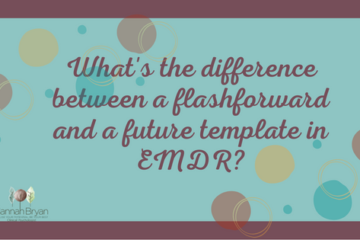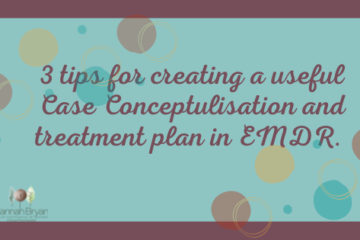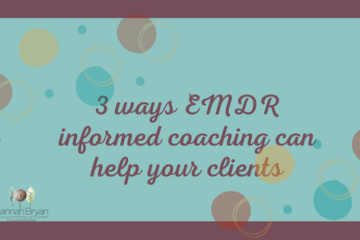Phase 5 in the standard treatment protocol is looking at installing the positive cognition. So after the trauma memory has been processed and worked through, we can proceed to focus on the most positive thing the person can say about themselves when they think of the trauma they experienced. In the standard protocol we ask the client to hold together the trauma memory, the words from the positive cognition and rate how true they feel now on a scale of 1 – 7 with 1 being completely false and 7 being completely true. Sometimes clients will give us a low score. Read on if you occasionally get stuck with this and would like some ideas of how to make the positive cognition as strong as it can possibly be.
Always try to install it first, even if the VOC is rated mid range.
If your client does tell you the VOC is only a 4 or 5, initially don’t let this fill you with horror and have an ‘Oh s***’ moment. I always recommend starting off simply because we often over complicate things. It might just be that this can be reinforced through holding together the positive cognition and the belief and doing shorted sets of bilateral stimulation. We also must remember that the speed of the BLS is the same as the processing speed. This is an issue I used to get very confused about but it should be fast but perhaps for a shorter period of time.

So try it and see. One of the things I love about EMDR is that you can tell quite quickly if something isn’t working and just make a change immediately. Push it where it moves.
Make sure that the client is holding the cognition with the trauma memory.
What can often happen is that the client gives you a rating generally for how much they believe the positive cognition. So they are giving you a number for how true they feel it is in the whole of their life, not just in terms of the trauma memory. For example someone working on a trauma of a car accident might have the positive cognition “I am safe now”. However when you ask them to rate how true that is now they start thinking of covid-19, of how they slipped over in the ice this week etc etc and give a low rating perhaps a 4 or a 5.
Whilst that might be relevant to that person and their life and maybe need some work as well, the only thing we are rating now is how true they think those words “I am safe now” feel to them when they think about the accident.
Is there any other channels of association that need to be processed?
Phase 5 in EMDR can often feel like a chance to sweep up anything else that may have been left behind during the phase 4 desensitisation work.
Sometime we have moved onto this stage because clients have given us a SUD rating of 0, sometimes it’s not really a 0 and other channels of association need to be processed. Sometimes we have moved into this stage because we have taken a SUD of higher than 0 believing that it’s an ecological 1 and unlikely to change. For further thoughts on this, see my recent blog post (Click here )
So often after we have tried to install the positive cognition and we are still stuck with the VOC not getting any stronger we could ask ‘What stops it getting any higher’ and then process that, this is often just another channel of association.
Add a softener to the positive cognition to make it more believable.
Often the client may have picked strong statements for their positive cognition. “I am good enough”, “I am safe”. This are often the best ones to go with because they are generalisable and that’s what we want clients to experience. We want to install a positive cognition that after time is not just connected to the specific trauma memory but becomes connected to the clients functioning in general.

However if the VOC is low we might want to soften that statement a little so it’s not quite as strong or powerful but actually believable by the client. You could add a “I can be…good enough” “I can work towards…trusting my judgment” “I deserve…to be ok” “I can learn … to trust myself”, “I can choose …. to let it go” “I am willing to… succeed”. These can all help clients to feel the best they can about the traumatic experience they have had and that’s my main goal with the therapy work I do.
If you found this blog helpful, you might like my Demysifying Accreditation ebook. (Click here to find out more)The book has a quiz which looks at these key areas of the standard protocol enhancing knowledge of the standard protocol.



0 Comments